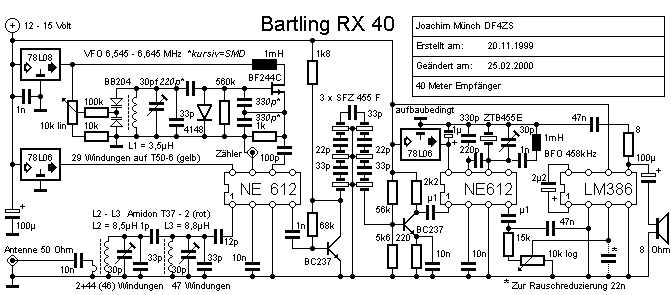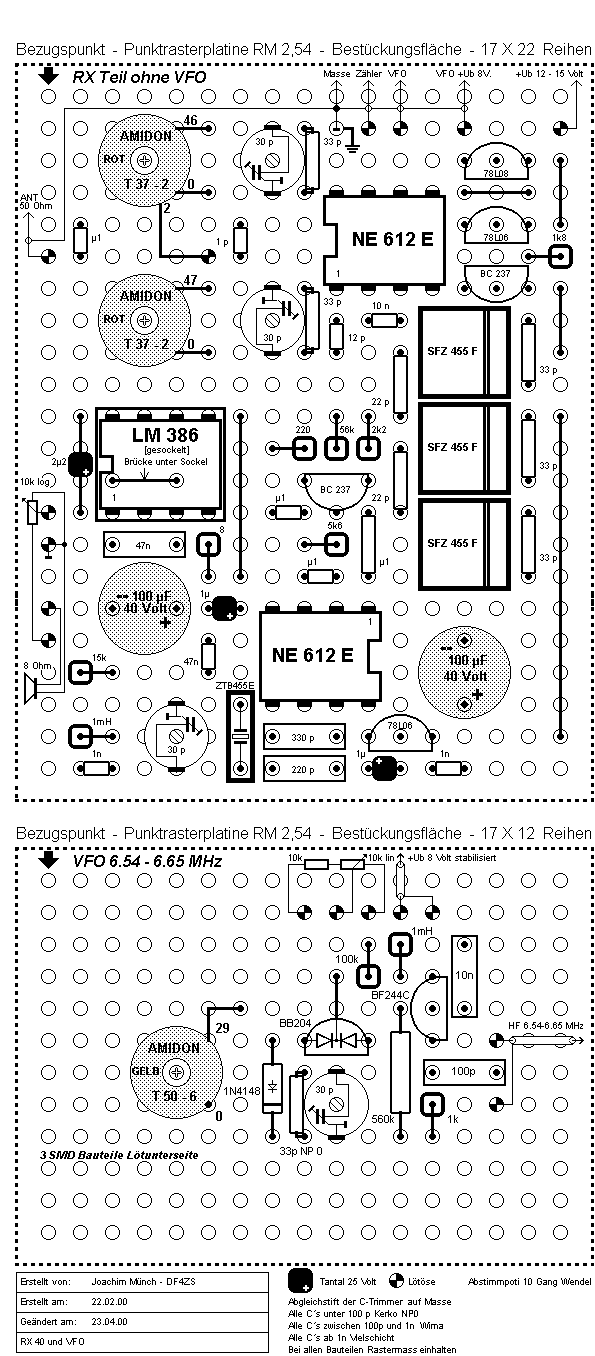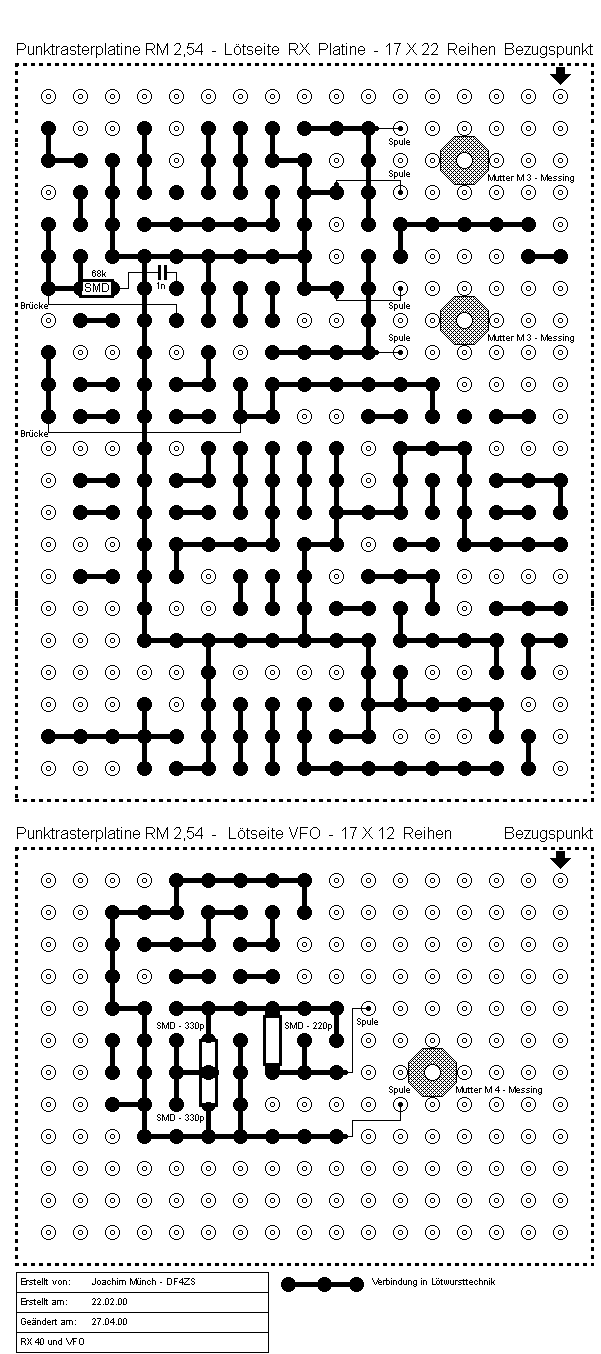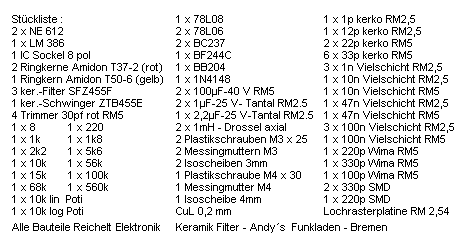



SSB-CW Empf?nger RX-40
In spite of its simplicity, this receiver offers excellent performance in terms of blocking and selectivity. Its VFO is a separate unit designed for long term stability; the short term frequency drift was measured to be below 100 Hz/hour after warm-up. The 2-stage input bandpass has a 3-db-bandwidth of about 110 kHz; its high selectivity allows for excellent LSB/CW reception even in the presence of strong neighboring BC signals at a long antenna (e.g. FD-4); there is no need of an additional attenuator! The only critical parts, regarding alignment and construction, are the VFO, the band pass and the BFO. Use enameled copper wire (AWG 28) for the windings on the toroids; the windings should cover ? of the cores‘ diameter. Count the windings at the inner side of the cores! The use of SMD components is a MUST in the VFO. After assembly, the VFO has to pre-aged: Put it into your freezer for about one hour, then – for about 30 minutes – into the baker’s oven at 110 °F. Repeat this procedure three to four times; then, let it cool down and check the VFO again for correct function. If it does not cover the whole band, substitute the 10-k-resistor leading to ground, by a trim potentiometer, adjust it for the right frequency coverage and measure its value; you may then replace it by a fixed resistor of this value. The bandpass can be aligned, using its trimmers, at the centre frequency of the band for optimum reception. The BFO has to be aligned for best reception of an SSB signal. For the main tuning, I recommend a 10-turn helipot; this will provide for good band spreading and easy tuning. Presently, I’m working on a companion transmitter unit for CW and SSB. As a digital frequency display, I recommend to use my programmable Frequency Counter.



